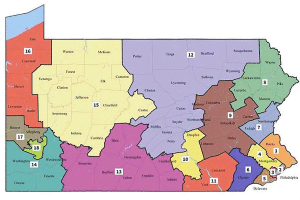By Jim Ellis
March 27, 2018 — Today we finish our look at the new Pennsylvania filings from Districts 10 thru 18, but first must mention a new story floating in the Washington Post and throughout the local Philadelphia media.
Rep. Ryan Costello (R-West Chester), after filing for re-election, is already dropping out of the race. In withdrawing, the two-term incumbent virtually hands the seat to Democrat Chrissy Houlahan, a first-time candidate for any office, because the local Republican Party will have no way of replacing him. Attorney Greg McCauley filed in the Republican primary and becomes the party nominee now that Costello has backed away. It is unclear why Costello filed for re-election if he was not serious about running.District 10: Rep. Scott Perry (R-Dillsburg/York)
Though new District 10, that now includes all of the York and Harrisburg metro areas, is more Democratic than Perry’s previous 4th District, President Trump still posted a nine percentage point win during the 2016 presidential election contest. Rep. Perry is unopposed in the Republican primary and draws five Democratic opponents, including 2016 congressional nominee Christina Hartman who suffered a decided loss to freshman Rep. Lloyd Smucker (R-Lancaster) in an adjoining district. Hartman raised over $1.1 million for her first congressional effort, and was originally seeking a re-match with Rep. Smucker. When the new redistricting plan left him with a solidly Republican district, she moved here even though none of her previous territory transferred to new CD-10.




